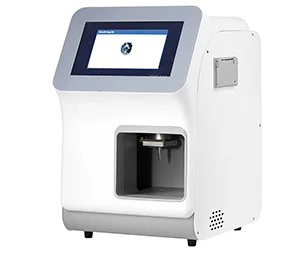How Freezing Point Osmometers Ensure Accurate Calibration Results
How Freezing Point Osmometers Ensure Accurate Calibration Results
In science labs and medical testing, getting exact results is super important. Freezing point osmometers are key tools. They measure osmolality, which shows how many tiny bits are in a liquid. At ความเป็นปอด, we make top-notch osmometers. They give trusty calibration results. This blog talks about why calibration matters, how freezing point osmometers help, steps to get good results, common problems, and why we’re a go-to supplier for osmometry needs.

The Importance of Calibration in Osmometry
Calibration is the heart of good osmometry. It makes sure freezing point osmometers give steady, honest results. These are vital for science work, quality checks, and helping patients in medical places.
Why Calibration is Crucial for Osmometers
Osmometers check osmolality, or how many bits are dissolved in a liquid. In areas like medicine-making, health tests, and food studies, even small mistakes can mess things up. For example, in health tests, wrong osmolality can hurt patient care plans. Calibration matches the osmometer’s readings to known standards. This keeps results exact and safe. Without good calibration, your data might not be trusted.
Factors Affecting Calibration Accuracy
Lots of things can mess with calibration accuracy. Stuff like room heat or dampness can change results. The quality of calibration standards matters too. A dirty osmometer can cause errors. Also, how the person uses it makes a difference. Rushing or sloppy handling can lead to mistakes. Knowing these issues helps keep results top-quality.
To tackle these problems, let’s see how freezing point osmometers make calibration better.
The Role of Freezing Point Osmometers in Calibration
Freezing point osmometers measure osmolality by checking how a liquid’s freezing point changes. Their sharp accuracy makes them great for calibration. They give steady results for many uses.
How Freezing Point Osmometers Work
Freezing point osmometers use a simple but smart idea. When a liquid cools, bits dissolved in it make it freeze at a lower point than plain water. The osmometer measures this change very carefully. It turns it into an osmolality number. Our V3.0 osmometer has special sensors. They catch tiny heat changes. This gives super exact results. This tech makes sure calibration is based on solid measurements.
Benefits of Using Freezing Point Osmometers for Calibration
- Super Exact: These osmometers are more precise than other ways. They’re perfect for calibration.
- Works for Many Liquids: They can check body fluids, medicine mixes, or factory liquids.
- Easy to Use: Our V3.0 has a simple screen. It cuts down on user mistakes during calibration.
- Meets Rules: They follow standards needed in medicine and lab work.
These perks make freezing point osmometers a must-have for good calibration. Next, let’s go over the steps to get spot-on results.
Key Steps in Achieving Accurate Calibration Results
Good calibration needs careful setup and clear steps. Doing it right helps your freezing point osmometer give true results.
Preparing the Osmometer for Calibration
Before you start, make sure the osmometer is ready. Clean the sample area to clear out old test bits. Check that the tool is at the right room heat, usually normal room warmth. Our V3.0 osmometer has built-in checks. They show if the system is good to go. This makes prep easier. Also, make sure tools like pipettes are clean and work well.
Selecting Appropriate Calibration Standards
Calibration standards are liquids with known osmolality numbers. Pick standards that cover the osmolality range you expect in your samples. For example, use 100 mOsm/kg and 1000 mOsm/kg for body fluids. Make sure standards are fresh. Store them right to keep them good. Good standards are key to matching the osmometer’s readings to real values.
Conducting the Calibration Process
- Put in the Standard: Use a pipette to add the calibration standard to the sample area.
- Start the Test: Begin the measurement. The osmometer cools the sample and checks the freezing point.
- Fix Settings: If the result isn’t the same as the standard’s known number, tweak the osmometer’s settings. Follow the user guide.
- Check Again: Test another standard to make sure it’s accurate across the range.
Doing these steps keeps your osmometer calibrated right. But problems can pop up. Let’s look at those next.
Common Challenges in Osmometer Calibration and Their Solutions
Even with good prep, calibration can hit snags. Knowing these issues and fixes helps keep results true.
Addressing Errors in Measurement
Errors can come from many places. Dirty standards, air bubbles in the sample, or osmometer drift can cause trouble. To fix these:
- Check Standards: Make sure calibration standards are clean and not expired.
- Avoid Bubbles: Pipette samples slowly to keep air out.
- Calibrate Often: Do calibration checks regularly to spot drift early.
Our V3.0 osmometer has error warnings. They help find problems fast, making fixes easier.
Ensuring Consistency Across Multiple Calibrations
Keeping results the same is key when calibrating many osmometers or doing lots of calibrations. Differences in how people work or room conditions can cause issues. To keep things steady:
- Set Clear Rules: Train everyone to use the same steps.
- Control the Room: Keep heat and dampness steady in the lab.
- Use Auto Features: Our osmometers have auto-calibration modes. They cut down on human mistakes.
| Problem | Fix |
| Dirty Standards | Use fresh, good-quality standards. Store them right. |
| Air Bubbles in Sample | Pipette carefully to keep samples clean. |
| Different User Ways | Train staff to follow the same rules. |
| Room Changes | Keep lab heat and dampness steady. |
Fixing these issues keeps calibration solid. Now, let’s share how we at MedIntegrity help with your osmometry needs.
MedIntegrity: A Trusted Supplier of Freezing Point Osmometers
At MedIntegrity, we’re proud to offer top tools for science and medical fields. Our osmometry know-how makes us a dependable partner for labs around the world.
Commitment to Quality and Precision
We work hard to give tools that are super accurate and trusty. Our freezing point osmometers, like the V3.0, use smart tech for exact measurements. With lots of experience and ties to big names like BeiGene USA and Sunny Pharmaceutical, we know what high-stakes work needs.
Product Range and Customer Support
- Cool Products: Our V3.0 osmometer has auto-calibration and meets rule standards.
- Full Help: We offer setup, training, and ongoing tech support to help you win.
- Worldwide Trust: Thousands of companies globally use our tools, made for their needs.
To learn more, check our homepage or contact us to talk about what you need.
As we finish, let’s think about the big role of freezing point osmometers in calibration.
Conclusion
Freezing point osmometers are key for getting exact calibration results. They ensure true osmolality measurements in science and medical work. By knowing why calibration matters, following clear steps, and fixing common issues, labs can stay precise and follow rules. At MedIntegrity, we give top-tier osmometers and great support to help you shine. Getting a good freezing point osmometer is a move toward honest results and better success.
FAQs About Freezing Point Osmometers and Calibration
Q1 What is a freezing point osmometer?
A1 A freezing point osmometer is a tool that checks osmolality. It measures how a liquid’s freezing point changes because of dissolved bits. It’s used a lot in medicine-making, health tests, and science to get accurate, trusty results.
Q2 How often should an osmometer be calibrated?
A2 How often you calibrate depends on how much you use it and what rules you follow. Usually, calibrate daily or before each test batch. Labs with lots of tests may need more checks. Talk to our team at ความเป็นปอด for a calibration plan that fits you.
Q3 Can freezing point osmometers be used for all types of solutions?
A3 These osmometers work for most water-based liquids, like body fluids, medicine mixes, and factory liquids. But they might not work for thick or non-water liquids. Our V3.0 osmometer handles many sample types well.







